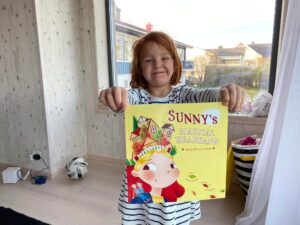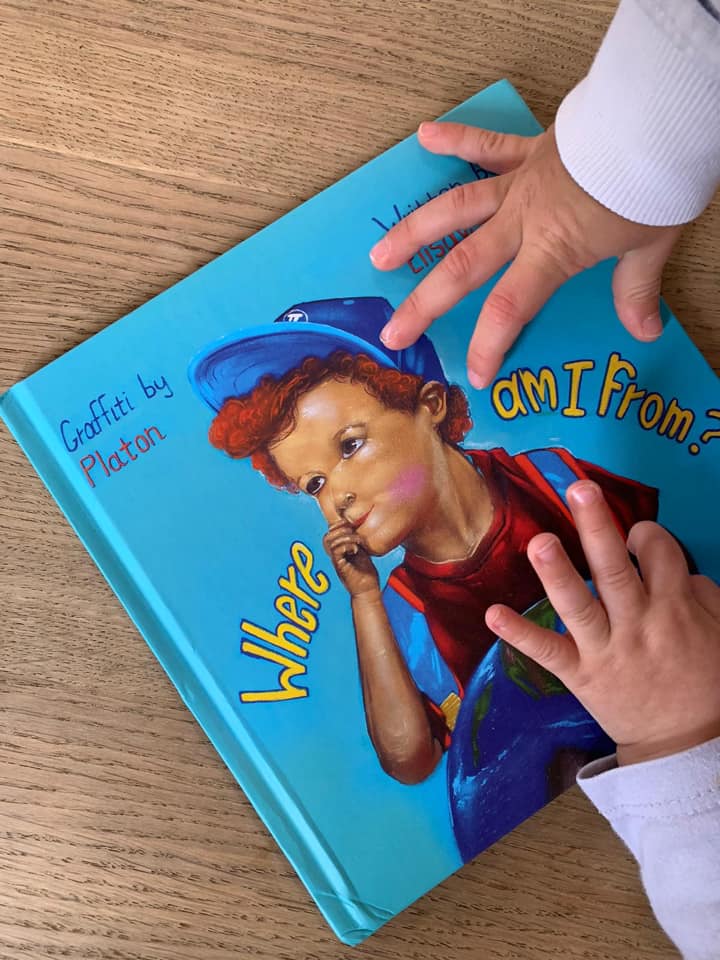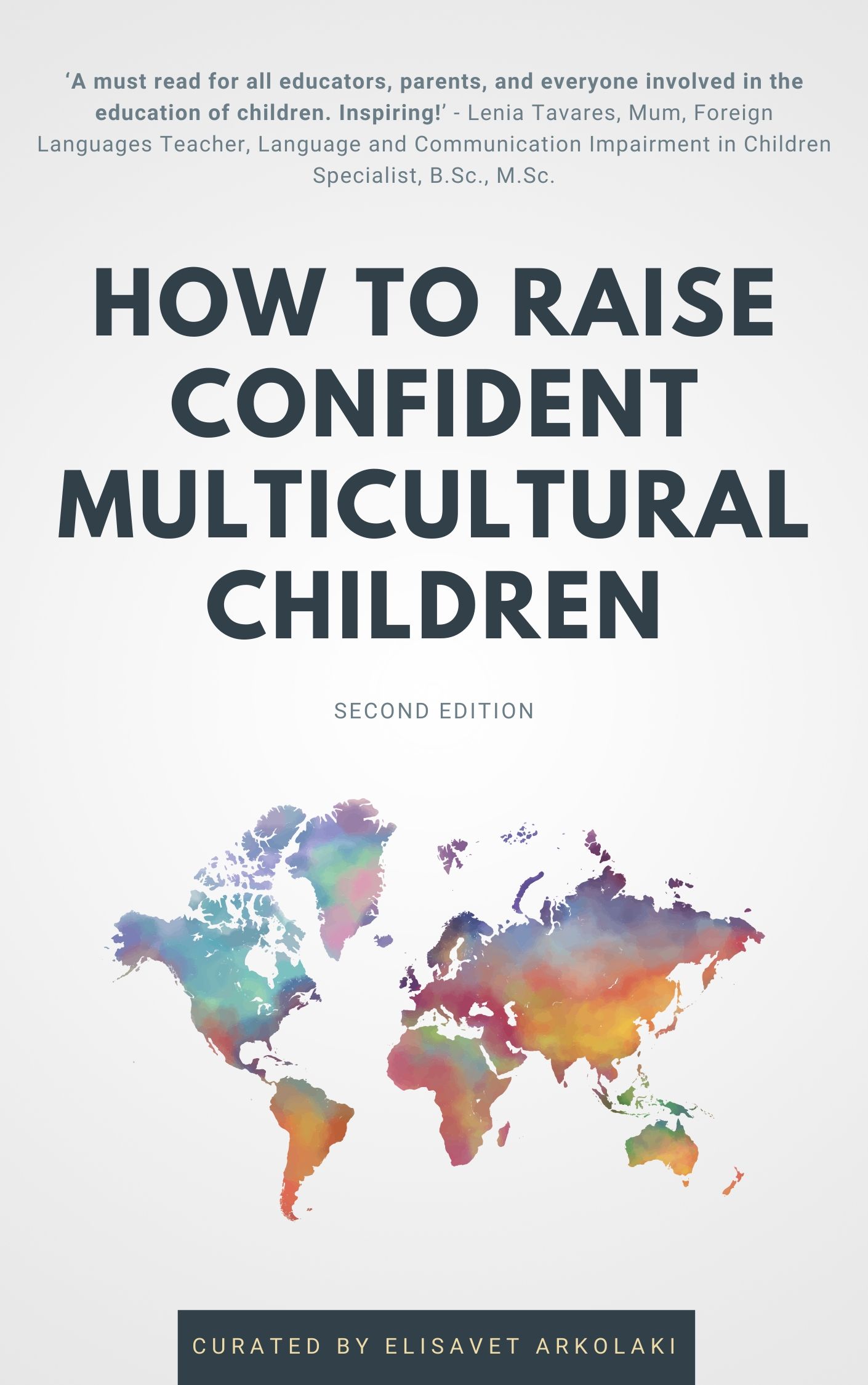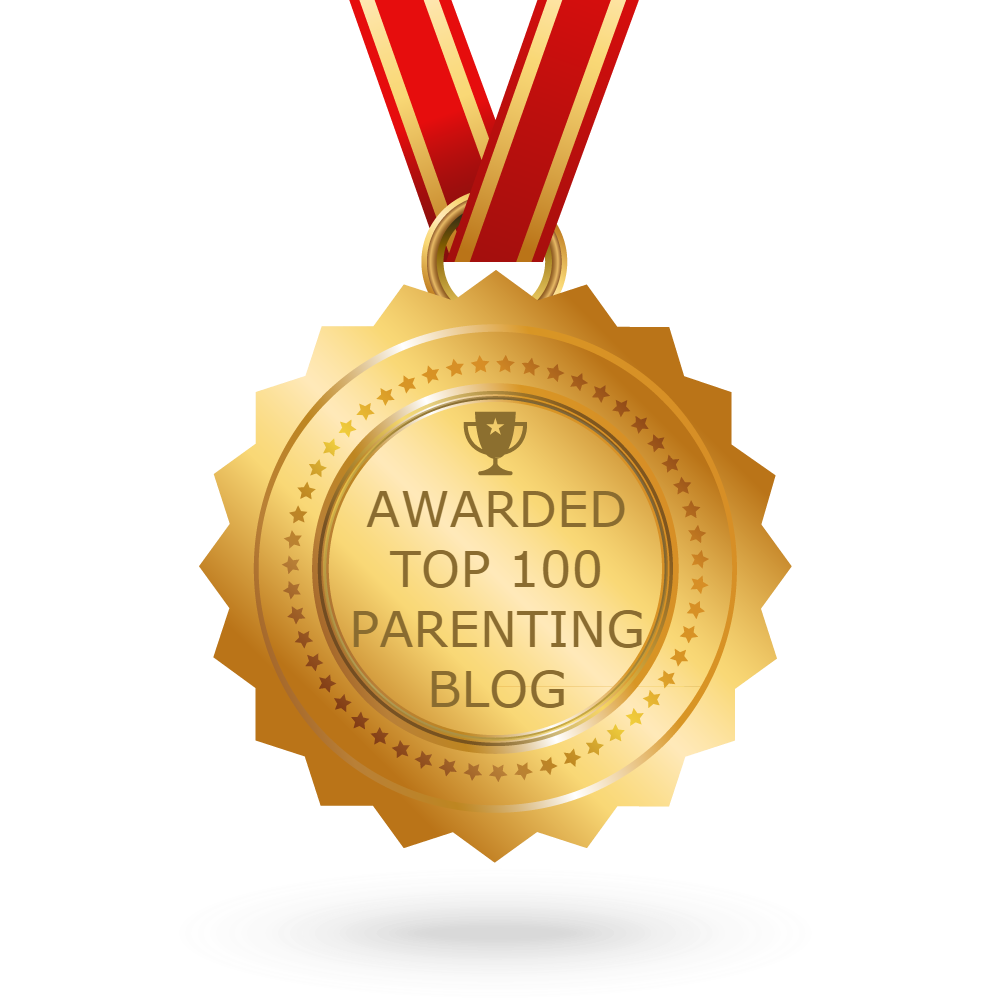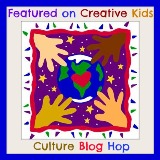Raising multilingual children with additional needs abroad

8. Raising multilingual children with additional needs abroad by Dr. Ute Limacher-Riebold
Click here for the index and access all the chapters.
One of the longest-lasting myths concerning multilingualism is that children with additional needs should not become multilingual, or if they already are using a minority language at home, they should stop using it. Thanks to new research in the field, this view is to be replaced by one that states that these children can indeed become multilingual, or remain so.
Multilingual Children with additional needs living abroad
Transmitting a heritage language while living abroad requires dedication, consistency, and time. The challenge for parents is even greater if the children need additional support. It is arduous for parents to find suitable support, even when they are familiar with the system. The whole process is even more tedious for those who have to navigate an unfamiliar system and have to find out about the regulations, policies, and practices in another language. Many parents feel vulnerable and disoriented.
Millie’s story
Millie Slavidou, a British mother of three, currently living in Cyprus, shared her experience in an interview on my site.
Millie is a linguist and knows about language acquisition and learning, as well as multilingualism. She is aware of the possibilities, the best practices and strategies, and of what is realistic and what is not, and she knows what and where to search for answers and advice. Her personal experience illustrates what experts in the field can go through when navigating the system with a child that needs additional support.
Millie’s family speaks multiple languages. Millie and her husband raise their children abroad and want them to become fluent in all their languages.
Millie has now been living in Cyprus for three years (2019) and prior to this spent some years in Italy and lived in Greece for 16 years. She speaks English, Greek, and Italian fluently, and studied linguistics in Britain. With her three children, she speaks exclusively English at home and sometimes throws in a phrase in Italian. Her youngest son “has additional needs that are severe enough that he has been going to speech therapy for many years. He also has cognitive delays.” She shares the beginning of her journey by describing how arduous her experience was with getting a referral for a speech therapist in Greece. She was told that he “can’t have speech therapy because you are bilingual and this is what is causing the problem”. Millie was warned, that by insisting on wanting to raise her son bilingually, she was sabotaging him, and even though her “other two children were doing well and had very good age-appropriate vocabulary in both their languages”, she was told that “children with additional needs cannot be bilingual”, therefore she was supposedly causing the problem for her third child. It was only thanks to her determination that she managed, against all odds, to obtain speech therapy for her son.
Parents sometimes have to fight to get the therapy their children need. Many parents believe healthcare professionals, teachers, etc because they are supposed to know how to best support AN children, and don’t question their advice. They accept that in order to support their children with the community language, they should stop speaking their own language with their children.
Millie’s son received the speech therapy he needed in the end, but some of the health practitioners still insisted that she should “stop bilingualism” and speak the community language with him instead. It took her many attempts to find professionals that would accept her talking her language with him. When her son started school, Millie got told again by the teacher to “stop speaking English” with her son.
What should be the most obvious and natural thing to do – speaking your language with your child – becomes the scapegoat whenever a multilingual child has any kind of AN issue. The number of languages is the first thing people blame and consider responsible. When children of multilingual families struggle with acquiring language and/or with becoming verbal, the “too many” languages are blamed.
Millie’s son never attended nursery school because he was refused due to his issues. It is only thanks to Millie’s tireless perseverance that he got into school: “You have to be quite strong to deal with this. Some people can’t. I resent being patronized by doctors because they assume that you don’t know anything. They speak to you as if you were completely ignorant and I know what can be done, I know what I’m talking about. You really feel you’re fighting an uphill battle.”
Millie and her family are now well settled in Cyprus, where the system for children with additional needs at primary school is supportive. Her son is nine years old and goes to a special unit within the mainstream school and receives the support he needs. Teachers and speech therapists managed to collaborate, and together with Millies’ support, her son is making great progress.
When families lack support in this kind of situation while living abroad, they do not always have the resources and means to move internationally. Millie says that one of the reasons why they moved to Cyprus was that they speak Greek there too and that her husband was very concerned about putting their son into a new linguistic environment. They were worried about the impact of an additional – fourth – language on their son’s overall development. In Cyprus, the underlying culture is Greek, which her son is very familiar with, and which certainly contributed to his smooth adaptation to the new setting. – For children with AN, change can be very difficult and parents need to take this into consideration when they face changes such as an international move.
Millie’s 4 tips for families in a similar situation:
1) Trust your own instincts: You’re not harming your child when you speak your own language with him.
2) Be prepared: You have to do the research about the bilingualism aspect, you have to research your child’s condition, whatever the condition is, because you might come up against a brick wall, with people being negative about it and you need to be informed. – Don’t expect speech therapists, teachers, and doctors to know the solution suitable for your child. They are simply human beings. There is a lot of new research data about bilingualism, multilingualism, and the function of the brain. But not everyone is aware of all these research results.
3) You have to stand up: Over and over again, you have to stand up for your child. It can be difficult but you should ignore the inner voice that holds you back: go for it and keep going. – There are other children born with the same or similar condition as your child, and their parents will also need some support and they’ll need help, maybe you can be part of that help in some way.
4) Join online communities for parents of children with all kinds of conditions: Children with additional needs are very common, and one doesn’t need to hide it. There is nothing to be ashamed of. Some of these online groups are very knowledgeable, they might refer you to a paper, or a piece of research, you can really find a lot of help from them! – It is important to join these groups not only to gather information but also because you will need to feel that you’re not the only one who is dealing with this.
Tips for parents with multilingual AN children living abroad
The general fear of professionals and parents alike, when it comes to multilingualism and children with additional needs, is that learning one language is already difficult for these children, therefore learning two or more languages would be just too difficult. They wonder if exposing a child with AN to two or more languages would result in no language being learned well:
“This is a myth and it has been debunked through studies of typically developing children and children from the three groups [specific (or primary) language impairment (SLI), Down Syndrome (DS) and Autism Spectrum Disorder (ASD)]. Children with developmental disabilities, regardless of diagnosis, can and do become bilingual, but, unfortunately, many professionals and families are not aware of these research findings.”
Many studies disprove the notion that children with developmental disabilities or speech impairments should stop using their heritage language and focus only on one language. Bilingualism does not increase the risk or severity of language impairment (Peña 2016, 87), and impairment status is not related to bilingualism, because risk factors for impairment and their level of severity are similar for both monolingual and dual language learners (DLL) children.
Fortunately, the number of professionals knowing that children with language or cognitive impairment are capable of learning two (or more) languages is increasing.
In 2005, Tamar Kremer-Sadlik from the University of California, Los Angeles, pointed out that there is no proof that multilingualism harms language acquisition or further language learning in impaired or delayed children.
In a special issue of the Journal of Communication Disorders (2016), researchers presented their results about bilingual access and participation for children with developmental disabilities. They focused on three groups: children with specific (or primary) language impairment (SLI), Down Syndrome (DS) and Autism Spectrum Disorder (ASD), as “these are the ones who have been studied to any real degree with the emphasis having been put on bilingual children with SLI. Almost no research exists on bilingualism in other populations of children with developmental disabilities such as children with cerebral palsy or intellectual disabilities or other etiologies.” (Elizabeth Kay-Raining Bird, Psychology Today)
The study by Korkoman M. et al (2012) on simultaneous bilingualism and its possible impact on language problems finds that:
“Simultaneous bilingualism does not aggravate specific language problems but may result in slower development of vocabulary both in children with and without specific language problems. Considering also advantages, a bilingual upbringing is an option also for children with specific language problems. In assessment, tests of vocabulary may be sensitive to bilingualism, instead tests assessing comprehension, syntax and nonword repetition may provide less biased methods.” (Korkoman et al 2012)
Fact is: Children with AN can learn multiple languages (simultaneously and sequentially)
Multilingual children will acquire at least one additional language during their first years of life without formal education (simultaneous multilinguals) or learn the additional language(s) in formal education (sequential multilinguals), or there can be a combination of both: i.e. acquire two languages at a very early stage and learn additional languages later. They can speak and/or read and write all their languages to a certain degree of fluency at some point in their life, and one or more of their languages can become dominant, whereas others, that might have been dominant before, become less dominant or even passive (this is called language shift and language attrition).
Is there a difference between simultaneous and sequential bilinguals with AN?
Compared with monolingual peers, simultaneous bilinguals with developmental disabilities show no difference in language skills when compared in an appropriate way. This means that for simultaneous bilinguals with a developmental disability who have relatively equal abilities in both languages, research shows that their ability in each language does not differ from that of monolingual similarly affected peers.
However, many simultaneous bilingual children do not have equal abilities in both or all their languages because they hear and use one language more often than the other. When this happens, the stronger language should be taken as a reference. Ideally, both languages should be assessed, as they can be complementary to each other – consider for example the vocabulary a child uses at home in the heritage language and that needed at school (or in the community).
Sequential bilinguals begin to learn the second language somewhat later than simultaneous bilinguals, usually when they enter school. Children with Specific Language Impairment (SLI) will need some years to catch up to monolinguals who are similarly affected. The same has been reported in typically developing children who also lag behind in second language development. This is not surprising, since learning a second language takes time. With regard to children with Down Syndrome (DS) or Autism Spectrum Disorder (ASD), “the current evidence shows no detrimental effects of sequential bilingualism if you take into account both languages of the bilingual child when making comparisons.”
How can parents and practitioners best support children with AN in their life with two or more languages?
My tip for parents who raise their children with multiple languages, no matter if they have AN or not, is to observe them closely and avoid comparing them to other children. Every child develops in its own way – even the overall development of siblings can differ considerably.
When parents have concerns about the development of their child, it is important for them to know what their child is able and comfortable doing in different settings: being at home, outside of the home, in different societal situations, etc. Parents should also be knowledgeable about what their child needs in order to be confident (for example in assessment situations). – These are important details parents will have to share with professionals who will assess their child.
When families get the advice that their children need additional support, a quest for solutions starts that seems never-ending. Online forums and chat groups, but also scientific research are where they gather information from. Both sources are important and valuable to find out what is possible and desirable from a research and personal point of view. I, personally, see the problem in the frustration that this may cause in some parents who observe that their children are not developing in the way other children do, or who realize that they don’t find the kind of support and therapy others talk about.
Our expectations always depend on our experiences. When parents are trying to figure out what help they can get for their AN children, they assume that things are done similarly everywhere. I recommend not taking anything for granted, because what is common sense and practice in one country might not be in another one. Practices differ from country to country and it is fundamental to make a reality check in order to know what is possible and to be prepared and flexible with regard to possible solutions. This applies to the AN of the child as well as to the languages the child is learning.
Here is a list of some of the assumptions parents of children with AN usually make:
Assumption 1: Assessments are done early everywhere
Frequently, assessments start when the children join at daycare or preschool, wherein, depending on the country, the policies, and the support systems in place, it will take months before the children get the help they need.
Families with AN children who live abroad, need to first find out what system is available. Dealing with different school systems and policies that are not as helpful and supportive as expected, as well as non-informed advice given by professionals is daunting: knowing that inclusion is not the norm everywhere will put you in the right mindset.
The underlying premise of inclusion is that all children can learn and belong to the mainstream of school and community life. Inclusion is a basic value that extends to all children (Dash, 2018): “There have always been children with diverse needs, but there have not always been educational programs to meet their needs.”
When relocating repeatedly, you may prefer to consider staying longer in one place – or moving earlier to another. Assessments and procedures require time and patience. Families who stay in one place for a shorter period might find going through the whole process over and over again too exhausting, not to mention the child, who would benefit from some continuity.
Fact is: Assessments are not done early and automatically everywhere. Inform yourself about early intervention programs in the area you live in or are moving to.
Assumption 2: Parents are supported to speak their heritage language with their children with AN
It seems obvious to maintain our heritage language with our children. Nevertheless, parents might still be advised to speak a language they are not fluent in with their children, although research proves that it has a negative impact on communication and connection with the children.
Interviews with parents of children with Autism Spectrum Disorder (ASD) show that parents feel less comfortable and less natural interacting with their children because of their discomfort. Needless to say that this has a detrimental effect on the child’s language and overall development, especially on children with communication difficulties!
Even parents, who were comfortable speaking their non-heritage language with their children, expressed feelings of sadness and guilt for not passing on their language and culture. One also needs to consider the impact this has on the whole family, the siblings of the child, the extended family, etc. The sense of isolation and exclusion for a child with ASD or any other AN is immense because usually the rest of the family continues using the heritage language(s).
When children don’t speak the same language as their parents or the rest of the family, they can’t communicate with them! A mother (who wants to remain anonymous), told me during a consultation that when she was asked to speak a foreign language with her autistic daughter “it was like asking me to abandon my child”, wherein the foreign language was the community language she barely understood (yet).
Without support of their families’ heritage language, children may lose their ability to take part in family conversations, which can affect their relationships with family members, and they may lose or reject their ethnic identity. Additionally, parents may not have the ability to communicate in the majority language and thus cannot provide quality language models in that language. As a result, if the minority language is excluded from the intervention, parents may communicate less with their children and may participate in fewer cultural activities in their heritage language. Also, when children are not able to speak the heritage language, parents may feel a sense of sadness and loss, because language is a key component of one’s cultural identity (De Houwer 2017).
Many AN children have learning difficulties. Active involvement in conversations is fundamental for language improvement – whenever possible and to the extent their disability allows them to do so of course. Language input and stimulation by two-way conversations have been proven to be positively related to language proficiency.
The quality of the interactions is more important than quantity. Children with developmental disabilities need to experience their languages in a functional and interactive way, designed to facilitate their language learning.
For autistic children, it is very important to speak the heritage language, since, “unlike normal children who learn the rules of speech acts and social functioning instinctually, (they) need to be exposed to a variety of social situations to learn the rules governing them” (Kremer-Sadlik, 2005: 1232). Therefore we should “not limit their access to conversations, and especially, to those that involve the autistic child’s parents. For autistic children, their parents are their primary source for language input, imitation, and practice, whether the children actively engage in activities with the parents or simply overhear parents’ social interactions” (Kremer-Sadlik, 2005: 1232).
Gonzalez Barrero 2017 and others have observed a “bilingual advantage in set-shifting skills as measured by an experimental task, to children with ASD (…) bilingualism is not harmful (…), and in fact, may provide some advantages, such as mitigating prominent set-shifting difficulties. (…) Bilingualism, under the right conditions, may act as a protective factor for certain EF difficulties for populations with neurodevelopmental disorders.” This kind of findings emphasizes a bilingual advantage. As positive and encouraging as they are for everyone, like myself, who advocates for everyone’s right to speak and learn their own languages, they should be taken with a grain of salt. There have been some objections to the methods used to achieve these results and more research needs to be done. – What one can take away from them though is that parents should keep speaking their heritage language with their AN children.
In this context, parents of children with and without AN should follow the advice of professionals who know about these studies and about how multilinguals acquire and learn languages, and what support is most suitable for them.
Fact is: Parents are still advised to prefer the community language (or school language, or language their children receive the treatment in) when they talk with their children.
Assumption 3: Multilingual children are assessed in all their languages
Intervention services for multilingual children with AN should be provided in all relevant languages for the child.
This might be possible in some cases and with some languages, but it is very unlikely that we can find professionals that are fluent or proficient in all our languages, everywhere.
“Multilingual children with PLI [Primary Language Impairment] benefit most from treatments designed to support all three key areas of development: L1, L2 and cognitive processing skills” (Ebert et al. 2014). Furthermore, they demonstrate impairment in both (or all) their languages and an effective intervention that involves both (or all) languages is essential “for improving language and, by extension, academic and social outcomes.”
A study about the beliefs of Speech-Language Pathologists (SLP) during language assessments of bilingual and bicultural individuals, shows how difficult it is to find the right help for multilingual children. The study analyzed the challenge of appropriate assessment of communication differences and disorders of multilingual and multicultural individuals (children and adults). SLPs were required to “use an assessment process that reliably differentiates true language disorders from language differences.” (Papoutsis Kritikos, 2003, 73)
Slightly more than half of the participants (52%) – monolingual SLPs as well as second language SPLs (who learned a second language via academic studying) – reported that “bilingual input in a child’s environment would influence their interpretation of that child’s language assessment results.”
Children with language disorders or other disabilities need to be able to use all means of communication and this involves all their languages. The skills they learn from one language can be transferable to the other. Multilingual children need all their languages in order to learn and communicate at home and school, as well as in the community (Bigelow & Collins 2019 and Garcia & Tupas 2019).
Fact is: Most assessments are done in the community language only.
Assumption 4: SLPs, therapists, etc. assess multilingual children in different settings, at school as well as at home
Social interactions at home provide opportunities for “absorbing the values of a culture, such as rules of politeness, story-telling conventions, gender roles, and other pragmatic influences on interaction” (Papoutsis Kritikos, 2003, 75). A SLP with an authentic bicultural experience has a greater understanding of a bilingual and bicultural client. ASHA states that there is a need for SLP who bring sensitivity to communication and cultural issues.
Although according to the ASHA guidelines, “bilingual and monolingual individuals should have an equal chance of receiving needed language therapy” (ASHA 1995), “almost 40% of the participants [of the aforementioned study by Papoutsis Kritikos 2003] reported that they would not be equally as likely to refer an individual with bilingual input for intervention as a child who hears only one language”.
As a result of the study: “the most accurate, comprehensive, and culturally appropriate language assessment is useless if the interpretation and decision-making phase of the process is biased” (Papoutsis Kritikos, 2003, 85).
It appears that the degree of multilingualism and multiculturalism among practicing SLP has a considerable impact on the assessment. Although one would expect that the situation has changed since this study in 2003, and it certainly has in some countries, examples like Millie’s (which is not an exception), show that we can not assume that our SLP (or other therapist), has the necessary experience with multilingual and multicultural families. If we want to be sure that our child receives the right assessment and that the decisions made about the therapy are not biased, we have to be informed about the process, work closely with the practitioners and be well informed about the options.
Fact is: It is not uncommon that children are assessed by a team that is unfamiliar with the heritage language and culture, and that the child is only assessed in one setting. Furthermore, children from multilingual environments may be falling through the cracks by being under-referred or over-referred.
Assumption 5: Children with AN have access to bilingual programs and services
Unfortunately, this is not always the case. The studies in the 2016 Journal of Communication Disorders show that simultaneous and sequential bilinguals with disabilities “were taught only in the majority language and were assessed and treated only in that language more often than they should be.” Unfortunately, the more severe the disability, the less likely children with developmental disabilities to have access to bilingual support and services.
Elizabeth Kay-Raining Bird had a team interviewing practitioners and administrators to identify barriers that prevent children with developmental disabilities from accessing and/or participating fully in bilingual services and supports, and they found “both systemic barriers (e.g. limits in funding, service availability varying by geographic location, etc.) and barriers specific to children with developmental disabilities such as a tendency to prioritize special education services over bilingual services, a lack of integration of special education and bilingual services, and so on.”
Fact is: For children with AN, access to bilingual programs and interventions is not the norm.
Assumption 6: The support given to children with AN at school or by a therapist will be enough
This is one point that applies to all children with AN, no matter the issue they have.
Most parents aim for their children to become balanced multilinguals and preferably (nearly) native fluent in all their languages. It might come as a surprise, but this is already an unrealistic goal for many children who don’t have AN. Raising a child with multiple languages requires consistent use and improvement in all languages.
It is more realistic to define what languages our children with AN need in their daily life, to what extent – up to what level of fluency – and what they can achieve considering their very personal development in the short and long term. Furthermore, parents need to take an active role in this process and help their children deal with all their languages and foster their skills.
When defining goals, for the overall development and language learning of AN children, it is important to know the time and energy that can be put into this by the parents, as they must be actively involved in their children’s language acquisition and learning process.
“Best practice for both children and adults dictates that individuals (as age permits) and their families participate in the setting of goals as well as in the planning and implementation of therapy.” (De Houwer 2019: 384)
“It is critical that SLPs understand and incorporate the individuals’ and families’ beliefs about language, communication, and language disorders; styles of interaction; daily activities and who participates in those activities; and goals for therapy and the extent to which they want to be involved and who should be involved.” (Hammer 1998)
Whenever a child needs support, it will require the parents’ active involvement which can consist of homework given by the therapist. The problem is, that “some parents may not perform the activities at home, because the recommendation does not fit their beliefs and practices. To achieve congruence, SLPs may instead train older siblings to conduct the play activity and/or may look for language-intense times during the daily routine when parents spend time with their children and integrate the therapy targets into these naturally occurring activities.” (Scheffner Hammer and Edmonds 2019: 385)
Fact is: Parental involvement is fundamental for the development of the child; siblings and other family members can take an active part too.
I cannot stress this enough: Parents play a fundamental role in the overall progress of their children! This doesn’t only concern the AN but also the language goals.
Parents have unique knowledge and expertise about their children’s abilities, interests, likes, dislikes, strengths, needs, routines, and experiences. This is important information that can assist professionals (practitioners, teachers, etc.) in meeting the needs and providing the necessary support. When parents and professionals form collaborative relationships, they give the children the best chance to develop, learn and thrive.
Sometimes it seems to be an uphill battle, like the one Millie fought. Parents of AN children need to become experts and advocates for their children. For some parents, this is too much. This is why communities, online forums, readings, etc. are necessary for support and encouragement.
Only when parents know what is possible and what are viable options for their children and themselves – including siblings! – can they seek the most suitable help and determine in extent, thus their village. Following an African saying and adjusting it to the topic of this chapter: We need a multilingual village of supportive people to raise a multilingual child with AN.
Once parents and practitioners define the attainable goals for the children, they can design a plan that will help them and everyone else in their village to reach them.
Especially families who move frequently want to make sure that the children – and the family – receive continuous support and they want transitions to be as smooth as possible.
The example of Millie, who knows about multilingualism and knows that speaking her own language to her son won’t harm him, demonstrates that even if parents are well-informed and experts, they might have to constantly convince others about what is possible and should be done. A solid action plan, elaborated by knowledgeable practitioners will help the children and the family to find the most suitable solution.
Don’t forget your plan B…
Not every family living abroad wants to consider this or can afford this at any time, but when children with AN do not receive the expected and needed support in the country they live in, parents should always contemplate the option to move to a country where the children would receive the help they need.
For some families this means saying goodbye to mobile life, returning to the country of origin or a country where they lived before.
I have seen several families take this decision for their child’s sake. This is why families should regularly assess their situation and evaluate possible solutions when they are on an international journey.
To sum it up:
1) Determine the communicative needs of the children and the language(s) with which they must be familiar.
2) Consider the children’s relative ability in the different languages and the willingness and ability of the family members and school personnel to function in the various languages, as well as the children’s attitude toward language learning in general.
3) Discover what support is available in your area and if the heritage languages of your children are being considered (and to what extent).
4) Maintain your heritage language for emotional and behavioral regulation and for the family and cultural relatedness, which should be weighed against competing needs.
5) Find your village, i.e. people within your family and community who are actively involved in supporting your children, and experts who can guide you and outline a plan that considers the current research about the AN of your children and their languages.
6) Choose the education system that supports your children with their AN and their heritage languages, possibly with the help of a professional. Depending on the AN of your children, decide with experts about additional languages.
7) Provide optimal, intense, and well-structured input in the languages the AN children must be familiar with. Consult with professionals about tutoring, pedagogically designed natural language environments, language-rich activities, etc. in all the languages your children need.
8) Be aware that you might have to re-adjust your priorities at any moment along the journey.
References
- (American Speech and Language Association (ASHA) 1995).
- ASHA: American Speech Language Hearing Association, 1995, Communication development and disorders in multicultural populations: Readings and related materials, Rockville, MD: Author.
- ASHA: Help finding a professional speech-language pathologists and audiologists
- Baker, Colin, 2011, Foundations of Bilingual Education and Bilingualism, Multilingual Matters.
- Bedore, Lisa, Kay-Raining Bird, Elizabeth, and Genesee, Fred (eds.). 2016, The road to bilingualism: Access, participation and support for children with developmental disabilities across contexts, Journal of Communication Disorders, 63, 1-92:
- Kay-Raining Bird, Elizabeth and Fred Genesee, Ludo Verhoeven, 2016, Bilingualism in children with developmental disorders: A narrative review, Journal of Communicative Disorders, 63, 1-14.
- Pesco, Diane and Andrea A.N. MacLeod, Elizabeth Kay-Raining Bird, Patricial Cleave, 2016, A multi-site review of policies affecting opportunities for children with developmental disabilities to become bilingual, Journal of Communication Disorders, 63, 15-31.
- De Valenzuela, Julia, and Elizabeth Kay-Raining Bird, Karisa Parkington, Pat Mirenda, Kate Cain, Andrea A.N. MacLeod, Eliane Segers, 2016, Access to opportunities for bilingualism for individuals with developmental disabilities: Key informant interviews, Journal of Communication Disorders, 63, 32-46.
- Stefka, H. Marinova-Todd, Paola Colozzo, Pat Mirenda, Hillary Stahl, Elizabeth Kay-Raining Bird, Karisa Parkington, Kate Cain, Julia Scherba de Valenzuela, Eliane Segers, Andrea A.N. MacLeod, Fred Genesee, Professional practices and opinions about services available to bilingual children with developmental disabilities: An international study, Journal of Communication Disorders, 63, 47-62.
- Kay-Raining Bird, Elizabeth, Natacha Trudeau, Ann Sutton, Pulling it all together: The road to lasting bilingualism for children with developmental disabilities, Journal of Communication Disorders, 63, 63-78.
- Paradis, Johannes, 2016, An agenda for knowledge-oriented research on bilingualism in children with developmental disorders, Journal of Communication Disorders, 63, 79- 84.
- Peña, Elizabeth D., 2018, Supporting the home language of bilingual children with developmental disabilities: From knowing to doing, Journal of Communication Disorders, 63, 85-92.
- Bedore, Lisa and Peña Elizabeth, 2008, Assessment of Bilingual Children for Identification of Language Impairment: Current Findings and Implications for Practice, International Journal of Bilingual Education and Bilingualism, 11:1, 1-29.
- Bigelow, Martha and Penelope Collins, 2019, Bilingualism from Childhood through Adolescence, in De Houwer, Annick and Lourdes Ortega (eds.), The Cambridge Handbook of Bilingualism, CUP, 36-58.
- Dash, Neena, 2018, Significance of multilingualism for children with diverse needs & benefits in inclusive education: a qualitative study, International Journal of Creative Research Thoughts,1428-1435.
- De Houwer, Annick and Lourdes Ortega, eds. 2019, The Cambridge Handbook of Bilingualism, CUP.
- De Houwer, Annick, 2017, Minority language parenting in Europe and children’s well-being, in N. Cabrera & B. Leyendecker (eds.), Handbook on positive development of minority children and youth, Berlin: Springer, 231-246.
- Ebert, Kerry Danahy and Kathryn Kohnert, Giang Pham, Jill Rentmeester Disher, Bita Payesteh, 2014, Three Treatments for Bilingual Children With Primary Language Impairment: Examining Cross-Linguistic and Cross-Domain Effects, Journal of Speech, Language and Hearing Research, 57, 172-186.
- Garcia, Ofelia and Ruanni Tupas, 2019, Doing and Undoing Bilingualism in Education, in De Houwer, Annick and Lourdes Ortega (eds.), The Cambridge Handbook of Bilingualism, CUP, 390-407.
- Gonzalez-Barrero, Ana Maria, and Aparna S. Nadig, 2017, Verbal fluency in bilingual children with Autism Spectrum Disorders, Linguistic Approaches to Bilingualism, 7:13, 460-475.
- Gonzalez-Barrero, Ana Maria, and Aparna S. Nadig, 2017, Can Bilingualism Mitigate Set-Shifting Difficulties in Children With Autism Spectrum Disorders?, Child Development, 1-18.
- Gonzalez-Barrero, Ana Maria, and Aparna S. Nadig, 2018, Bilingual children with autism spectrum disorders: The impact of amount of language exposure on vocabulary and morphological skills at school age: Language skills in bilingual children with ASD, Autism Research, 11:12, 1667-1678.
- Grosjean, François, 2008, Studying Bilinguals, Oxford University Press.
- Grosjean, François, 2017, Supporting Bilingual Children With Special Education Needs. An interview with Elizabeth Kay-Raining Bird, posted January 18th 2017, https://www.psychologytoday.com.
- Hammer, C.S. 1998, Toward the “thick description” of families: Using ethnography to overcome the obstacles to providing family-centered early intervention services, American Journal of Speech-Language Pathology, 7:1, 5-22.
- Hårkansson, Gisela, 2017, Typological and developmental considerations on specific language impairment in monolingual and bilingual children: A Processability Theory account, Language Acquisition, 24:3, 265-280.
- Korkoman, Marit, Stenroos, Maria, Mickos, Annika, Westman, Martin, Ekholm, Pia, Byring, Roger, 2012, Does simultaneous bilingualism aggravate children’s specific language problems?, in Acta Paediatrica, 101:9, 946-952.
- Kremer-Sadlik, Tamar, 2005, To Be or Not to Be Bilingual: Autistic Children from Multilingual Families, Proceedings of the 4th International Symposium on Bilingualism, ed. James Cohen, Kara T. McAlister, Kellie Rolstad, and Jeff MacSwan, Somerville, MA: Cascadilla Press, 1225-1234.
- Papoutsis Kritikos, Effie, 2003, Speech-Language Pathologists’ Beliefs About Language Assessment of Bilingual/Bicultural Individuals, Journal of Speech-Language Pathology, 12, 73-91.
- Romaine, Suzanne, 2006, The bilingual and multilingual community, in Tej K. Bhatia & William C. Ritchie (eds.), The Handbook of Bilingualism, Malden, MA: Blackwell Publishing.
- Scheffner Hammer, Carol and Lisa A. Edmonds, Bilingualism in Clinical LinguisticsI, in De Houwer, Annick and Lourdes Ortega (eds.), The Cambridge Handbook of Bilingualism, CUP, 369-389.
- Toppelberg, Claudio, Snow, Catherine, Tager-Flusberg, Helen, 1999, Severe Developmental Disorders and Bilingualism, Journal of the American Academy of Child and Adolescent Psychiatry, 38:9, 1197-1199.
NEXT CHAPTER: Confident moms raise confident kids – On finding your tribe abroad
Click here for the index and access all the chapters.
Category: Uncategorized











